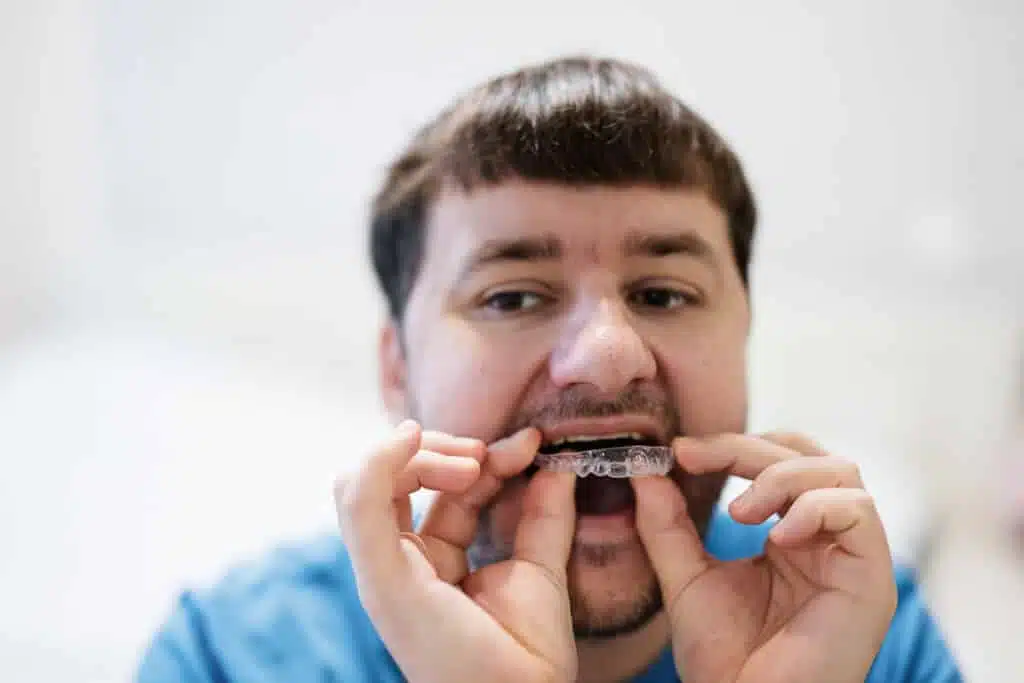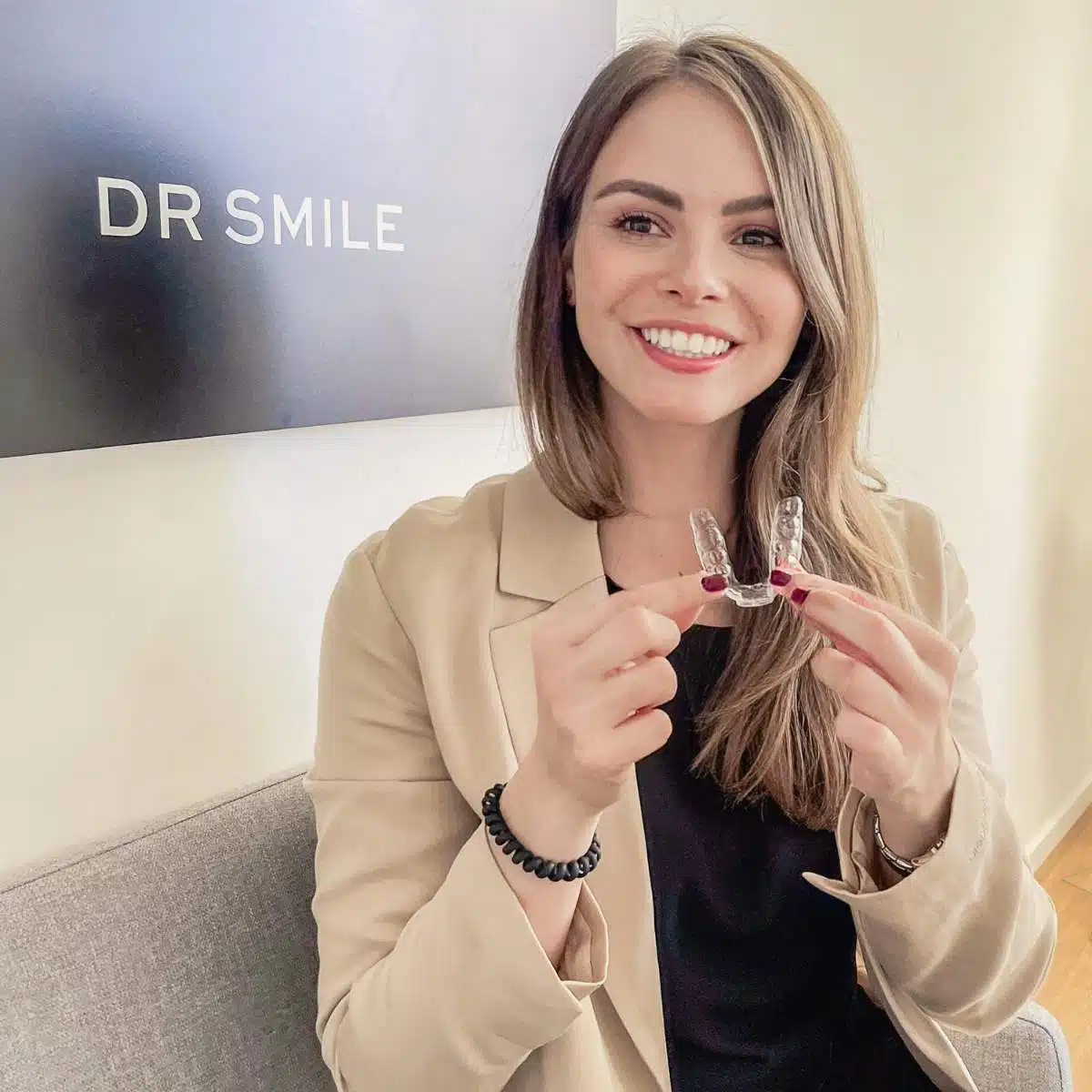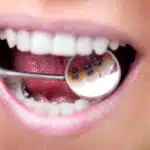Retainers: How long do they have to be worn after tooth correction? Tips and information on the topic of retention after treatment.
After a successful tooth correction, you finally stand in front of the mirror and admire the perfect result.
A radiant smile, straight teeth – the goal is achieved! But what many people don’t know: Teeth straightening does not end with the removal of the braces or the last aligner.
Your teeth have a natural tendency to move back to their original position. To prevent this, retention – i.e. wearing a retainer – is crucial.
But how long do you actually have to wear a retainer? And which type of retainer is right for you? In this article, you’ll find out everything you need to know about “Retainers – how long do I have to wear them?”.
| Get 150 € discount on your dental correction! |

Book a consultation appointment now at a nearby DrSmile partner practice and find out if teeth straightening with aligners is right for you.
The appointment is completely non-binding and does not involve any costs.
With the code “THATSMILE150” you will receive 150 € discount on the treatment.
Why are retainers important?
Teeth move for a lifetime. After a tooth correction, they are particularly vulnerable as the connective tissue that holds the teeth needs time to adapt to the new position.
Without retention, the teeth may return to their old position – a phenomenon known as “recurrence”. To prevent this from happening, it is essential to wear a retainer.

The different types of retainers
There are two main types of retainers: fixed retainers and removable retainers. Both have their advantages and disadvantages, and the choice often depends on your individual needs.
Fixed retainers
A fixed retainer consists of a thin wire that is bonded to the back of the front teeth. It is invisible, does not interfere with speaking or smiling and requires no additional discipline as it is worn permanently.
Advantages:
- Invisible and inconspicuous
- Continuous retention without you having to think about it
- Ideal for long-term stability
Disadvantages:
- Regular check-ups by the dentist are necessary
- More time-consuming cleaning, as plaque and tartar can accumulate around the wire
- Can come loose and must then be repaired
Removable retainers
There are two types of removable retainers: Transparent plastic retainers (e.g. Essix retainers) and retainers made of wire with a plastic base (Hawley retainers).
Advantages:
- Easy to clean
- Flexible, as they only need to be worn at night (after a few months)
- Can be replaced if necessary
Disadvantages:
- Require discipline and consistency when wearing
- More visible than fixed retainers (depending on the model – does not apply to the many transparent splints)
- Can be lost
After correcting your teeth with invisible aligners, you usually continue to wear the last pair of aligners and then switch to a transparent aligner made of a slightly firmer material after a few months. You can find more information about the DrSmile retainers here.
| Get 150 € discount on your dental correction! |

Book a consultation appointment now at a nearby DrSmile partner practice and find out if teeth straightening with aligners is right for you.
The appointment is completely non-binding and does not involve any costs.
With the code “THATSMILE150” you will receive 150 € discount on the treatment.
How long do you have to wear a retainer?
Here comes the most important question: How long should you wear your retainer? The answer is simple and yet sobering: at least a few years – often even a lifetime.
In the first few months after your teeth have been corrected, you should generally wear the retainer around the clock – except when eating or cleaning your teeth.
The wearing time can then be gradually reduced, for example to night hours. However, even years after the correction, there is a risk that your teeth will shift, mainly due to the natural ageing process of the jaw.
Why lifelong retention makes sense
- Natural tooth movement: Your teeth are never completely fixed. Even without tooth correction, they move due to chewing pressure, tongue movements and other influences.
- Jaw changes with age: As you get older, the structure of your jaw changes, which can also lead to tooth displacement.
- Maximizing treatment success: You have invested a lot of time and money in your tooth correction. Long-term retention secures the result.

Tips for dealing with retainers
- Care: Clean your retainer regularly. You can clean removable retainers with a soft toothbrush and mild soap. Fixed retainers require thorough interdental care with dental floss or special interdental brushes.
- Check-ups: Have your fixed retainer checked regularly by your dentist to ensure that it is properly seated and not damaged.
- Replacement: If your removable retainer is lost or damaged, have a new one made as soon as possible to avoid displacement.
Conclusion on the topic: Retainers – how long do I have to wear them?
Wearing a retainer may seem inconvenient at first, but it is the best way to maintain the result of your tooth correction in the long term.
Teeth move for a lifetime, and only consistent retention can prevent your effort and investment from being in vain. Remember: your radiant smile is worth it!
| Get 150 € discount on your dental correction! |

Book a consultation appointment now at a nearby DrSmile partner practice and find out if teeth straightening with aligners is right for you.
The appointment is completely non-binding and does not involve any costs.
With the code “THATSMILE150” you will receive 150 € discount on the treatment.
FAQs on the topic: Retainers – how long should they be worn?
Finally, we answer a few of the most frequently asked questions on the subject of “Retainers – how long should they be worn”.
What is a retainer and why is it important after tooth correction?
A retainer is an aid that holds your teeth in their new position after a tooth correction. Without a retainer, there is a risk of the teeth shifting again, as they remain in motion for the rest of your life. The retainer therefore secures the result of your treatment and ensures that your smile remains permanently beautiful.
How long do I have to wear my retainer?
In the first few months after tooth correction, you usually have to wear the retainer around the clock. After this phase, you can usually only wear it at night. In the long term, experts recommend using the retainer for the rest of your life to ensure the stability of your teeth.
Can I wear my retainer while eating?
Fixed retainers naturally remain in the mouth while eating. Removable retainers, on the other hand, should be taken out before eating, as they could be damaged by chewing pressure. Clean your retainer after every meal before reinserting it.
What happens if I don’t wear my retainer?
If you do not wear your retainer regularly, there is a risk that your teeth will shift again. This can lead to a so-called relapse, in which the teeth partially or completely move back into their original position. To prevent this, it is important to follow the wearing recommendations of your orthodontist.
How do I clean my retainer properly?
You can clean removable retainers with a soft toothbrush and mild soap. Do not use toothpaste as it can scratch the surface. For fixed retainers, use dental floss or interdental brushes to thoroughly clean the areas around the wire. Regular cleaning prevents plaque and tartar build-up.
How do I notice that my retainer no longer fits properly?
If your removable retainer is too tight or too loose, this is a sign that your teeth may have shifted. With a fixed retainer, you will often notice problems if the adhesive points have come loose or you have an uncomfortable feeling in your mouth. In both cases, you should quickly make an appointment with your dentist or orthodontist or contact your aligner provider.
Can I talk and sleep with a retainer?
Yes, you can! Removable retainers can be unfamiliar at first, but most people get used to them quickly. Fixed retainers do not interfere with speaking or sleeping, as they are attached to the back of the teeth and are not noticeable.
What does a retainer cost?
The cost of a retainer varies depending on the type and material. Removable retainers are often between 100 and 300 euros, while fixed retainers can cost between 300 and 500 euros, depending on the complexity. As the retainer is a crucial part of the treatment, this investment in your smile is well worth it.
Can a retainer break?
Yes, both fixed and removable retainers can be damaged. Fixed retainers can come loose, while removable retainers can break due to improper handling, high loads or poor cleaning. If this happens, you should organize a replacement immediately.



Leave a Reply